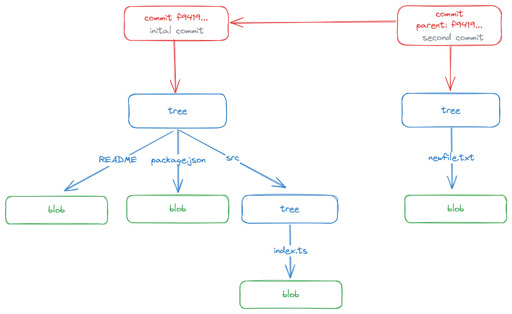- 53 Posts
- 85 Comments

 1·6 months ago
1·6 months agoI don’t use chat, it’s usually useless.
I think Chat is the most useful feature of Copilot. Prompts like /docs work impeccably, but /explain and /optimize is also pretty good. /tests is hit-and-miss if you have zero tests and require too much context if you already have them. More often than not /fix is a waste of time.
Where I found Copilot to be quite useful is something unexpected: naming things. You can prompt it to give suggestions, you can ask it to refactor things for you. Quite nice.
I think that Claude is far better at generating code, and explore new stuff, but Claude is also down and broken extremely often,not to mention it’s annoying limit of 10 questions per half a day.

 1·6 months ago
1·6 months agoI use chat the most. It’s pretty good once you understand the importance of building context, set up personas, and feed it workable prompts. The biggest mistake I see people do is presume that you can expect it to output gold when inputting garbage.
Once you build up an understanding of what personas work for your personal tastes and what context you need to have, it can output impressive results. The most success I’ve been having is with somewhat complex refactorizations. Stuff like “refactor X so that Y and Y” can save you a lot of time.
The most disappointing experience has been with writing unit tests. copilot has this infuriating tendency to remove old tests when you’re prompting it to add new ones. You need to explicitly request it to append tests to file X without overwriting existing tests for it not to mess up, and even then results are sketchy. For unit tests it’s also important to setup good contexts otherwise whatever time you save by prompting copilot to write them will be wasted refactoring code to use specific frameworks and follow specific styles.

 2·6 months ago
2·6 months agoLike most have already said, the auto complete is top tier (…)
My experience is the exact opposite. Even though it has its moments, more often than not it just hallucinates and proposes a lot of stuff that neither matches definitions nor could possibly compile. I guess that this might reflect the impact of having classes with similar names in multiple namespaces but it’s bad to the point I prefer to rely exclusively on plain old autocorrelation.

 11·7 months ago
11·7 months agoErm yeah because the whole point of monorepos is that you don’t use submodules. What?
Not true. The whole point of monorepos is that you track everything in a single repo. There is absolutely no requirement or constraint to avoid using specific features of specific VCSs or even package managers.

 1·7 months ago
1·7 months agoNeither does Git though.
Doesn’t it, though? I mean, you can update a submodule’s history directly from the consumer package. That’s the whole point of submodules. Otherwise you would be better off by just wget something into your project.

 1·7 months ago
1·7 months agoI don’t see why using submodules as a package manager should excuse their endless bugs.
I don’t know what are these “endless bugs” you’re talking about. Submodules might have a UX that’s rough on the edges, but there are really no moving parts in them as they basically amount to cloning a repo and checking out a specific commit.
Do you actually have any specific, tangible issue with submodules? Even in the cases you’re clearly and grossly misusing them

 2·8 months ago
2·8 months agoAside from the obvious UX disaster, Git has some big issues:
I find this blend of claims amusing. I’ve been using Git for years on end, with Git LFS and rebase-heavy user flows, and for some odd reason I never managed to stumble upon these so-called “disasters”. Odd.
What I do stumble upon are mild annoyances, such as having to deal with conflicts when reordering commits, or the occasional submodule hiccup because it was misused as a replacement for a package manager when it really shouldn’t, but I would not call any of these “disasters”. The only gripe I have with Git is the lack of a command to split a past commit into two consecutive commits (a reverse of a squash commit), specially when I accidentally bundled changes to multiple files that shouldn’t have been bundled. It’s nothing an interactive rebase doesn’t solve, but it’s multiple steps that could be one.
Can you point out what is the most disastrous disaster you can possibly conceive about Git? Just to have a clear idea where that hyperbole lies.

 7·9 months ago
7·9 months agoWhat is the advantage of rebasing?
You get a cleaner history that removes noise from the run-of-the-mill commit auditing process. When you audit the history of a repo and you look into a feature branch, you do not care if in the middle of the work a developer merged with x or y branch. What you care about is what changes were made into mainline.

 12·9 months ago
12·9 months agoBecause this is a casual discussion and that’d be more effort than I’m willing to put in.
I didn’t asked you to write a research paper. You accused Git of suffering from usability issues and I asked you to provide concrete examples.
And apparently that’s an impossible task for you.
If you cannot come up with a single example and instead write a wall of text on you cannot put the effort to even provide a single opinion… What does this say about your claims?

 1·9 months ago
1·9 months agoI think nobody talks about it because it doesn’t show history
What do you mean it doesn’t show history? It’s perhaps the only thing it handles better than most third-party git GUIs.

 1·9 months ago
1·9 months agoIt’s not and no one cares about numbers anymore.
The only people who ever cared about svn’s numbering scheme were those who abused it as a proxy to release/build versions, which was blaming the tools for the problems they created for themselves.

 2·9 months ago
2·9 months agodeleted by creator

 5·9 months ago
5·9 months agoI initially found git a bit confusing because I was familiar with mercurial first, where a “branch” is basically an attribute of a commit and every commit exists on exactly one branch.
To be fair, Mercurial has some poor design choices which leads to a very different mental model of how things are expected to operate in Git. For starters, basic features such as stashing local changes were an afterthought that you had to install a plugin to serve as a stopgap solution.

 13·9 months ago
13·9 months agothink the lack of UI
Even git ships with git-ui. It’s not great, but just goes to show how well informed and valid your criticism is.

 1·9 months ago
1·9 months agoSure if you never branch, which is a severely limited way of using git.
It’s quite possible to use Git without creating branches. Services like GitHub can automatically create feature branches for you as part of their ticket-management workflow. With those tools, you start to work on a ticket, you fetch the repo, and a fancy branch is already there for you to use.
You also don’t merge branches because that happens when you click on a button on a PR.

 2·9 months ago
2·9 months agoI think a common misconception is that there’s a “right way to do git” - for example: “we must use Gitflow, that’s the way to do it”.
I don’t think this is a valid take. Conventions or standardizations are adopted voluntarily by each team, and they are certainly not a trait of a tool. Complaining about gitflow as if it’s a trait of Git is like complaining that Java is hard because you need to use camelCase.
Also, there is nothing particularly complex or hard with gitflow. You branch out, and you merge.

 23·9 months ago
23·9 months agoNonetheless
You didn’t provided a single concrete example of something you actually feel could be improved.
The most concrete complain you could come up was struggling with remembering commands, again without providing any concrete example or specific.
Why is it so hard for critics to actually point out a specific example of something they feel could be improved? It’s always “I’ve heard someone say that x”.

 123·9 months ago
123·9 months agoGit is ugly and functional.
I don’t even think it’s ugly. It just works and is intuitive if you bother to understand what you’re doing.
I think some vocal critics are just expressing frustration they don’t “get” a tool they never bothered to learn, particularly when it implements concepts they are completely unfamiliar with. At the first “why” they come across, they start to blame the tool.

 46·9 months ago
46·9 months agoGit is no different. But it sure feels like it never took the idea of a polished user experience seriously.
I’ve seen this sort of opinion surface often,but it never comes with specific examples. This takes away from the credibility of any of these claims.
Can you provide a single example that you feel illustrates the roughest aspect of Git’s user experience?










It depends. You don’t need LLMs to write stuff for you that you already know. You use them to take.care of the drudge work or explore things you are not familiar with. Things like Copilot’s /explain can speed up onboarding even for seasoned developers, and Copilot can also help you speed up iterations on proofs of concept. For example, I’ve been using Copilot to experiment with some changes to the software architecture of some projects I own, and it’s fantastic at generating code following specific design patterns. It’s also fantastic to get it to iterate designs in near-real.time by prompting it with directives such as “repeat the last example but implementing X with design pattern Y and moving the implementation to Z”. You are presented with examples that you can browse through and get a taste of what you’d get, but with a fraction of the time. To top things off, you can prompt Copilot to present pros and cons and even propose optimizations.
Like any tool, it has its purposes. You just need to learn how to use it.